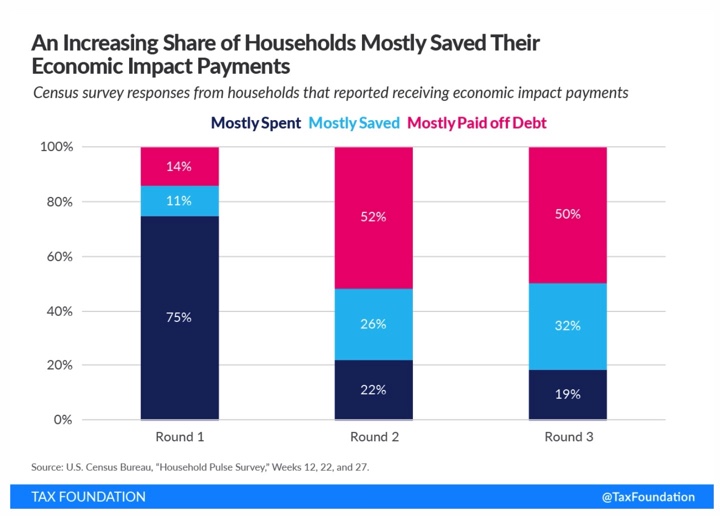Census Bureau survey shows individuals increasingly saved their stimulus payments
During the course of the pandemic, the federal government passed three stimulus bills that included economic impact payments (EIPs), otherwise known as stimulus checks.
At the beginning of the pandemic, stimulus checks were seen as a necessary way to prevent a reduction in income among distressed individuals due to massive job losses. However, by the end of 2020, huge concerns were raised about the necessity of continuing such payments.
This was largely due to the fact that by mid-2020, it had become reasonably clear that job losses were going to be concentrated at the low-end of the wage spectrum, therefore impact payments, which went to most taxpayers regardless of employment status would be poorly targeted. This, especially considering that the income eligibility threshold for the payments was fairly high.
New US Census Bureau data showing how these checks were spent proves that this concern was well-founded. According to an analysis done by the Tax Foundation, “while the largest share of household reported using their payments for necessities like food or other living expenses”, as the pandemic went on “households increasingly saved their EIPs or used them to pay down debt.”

Indeed, 75 percent of respondents reported using their first payment for consumption, potentially a sign that the checks were alleviating hardship among most recipients. However, by the third check, only 19 percent of recipients used the check for consumption, and instead, the majority –– 50 percent –– used the money to pay off debt, and close to a third of recipients saved their income.
This points to the likelihood that stimulus payments, especially the later ones, had little to do with helping distressed individuals deal with pandemic-related drops in income; instead, more targeted efforts would have been a better solution. Looking at how high-income individuals used their payments helps illustrate this point.
In the first round of payments, 84 percent of households with less than $50,000 in household income said they spent their payment, compared to 56 percent of households reporting more than $200,000 of income. By round three, 18 percent of lower-income households mostly spent their payments, compared to 20 percent of higher-income households. In the second and third rounds, using the payments to pay off debt was the most common reported use for households making under $200,000.